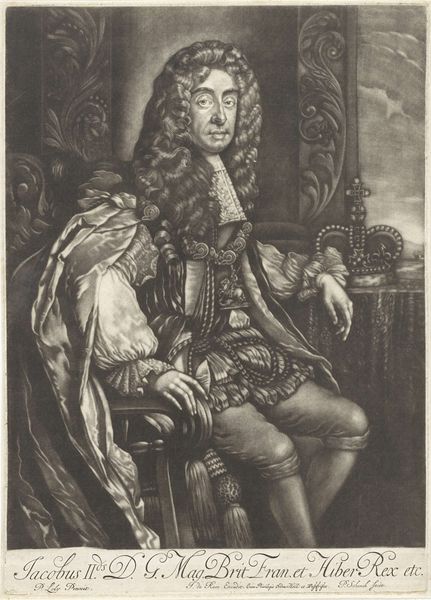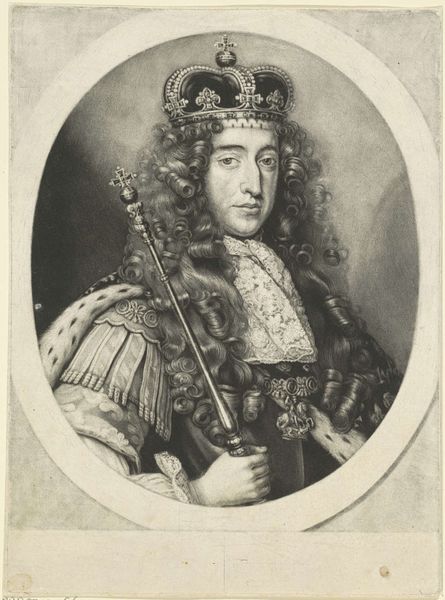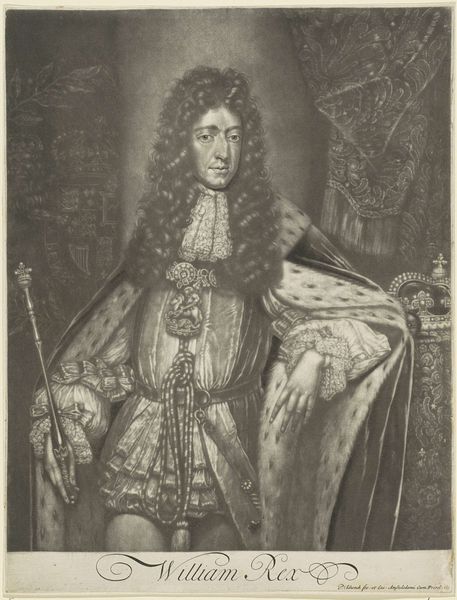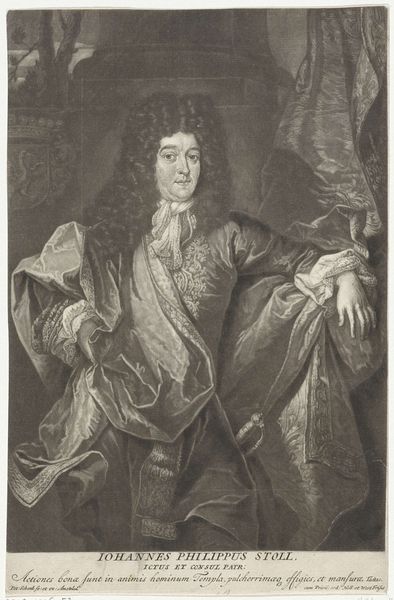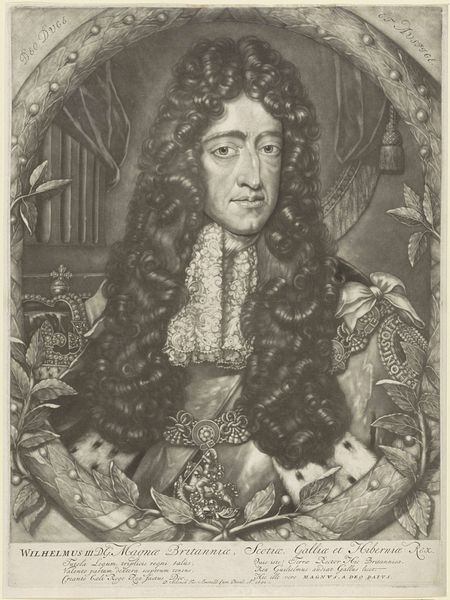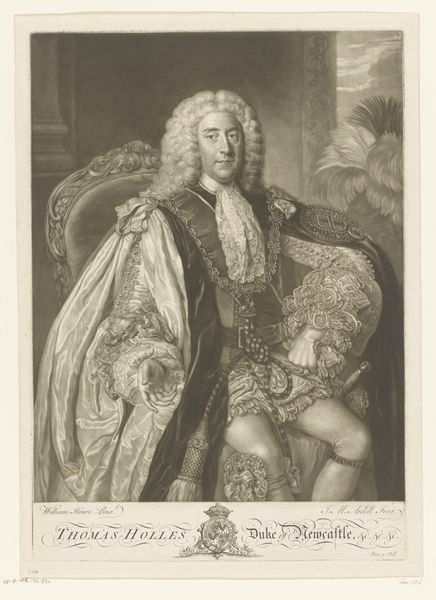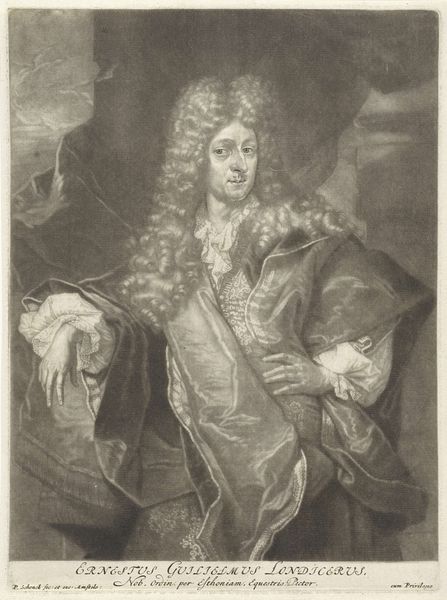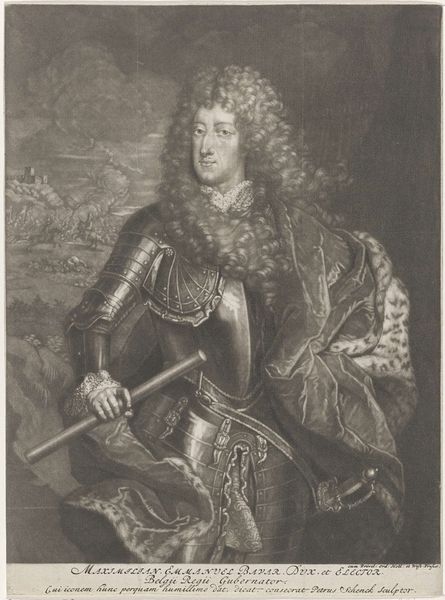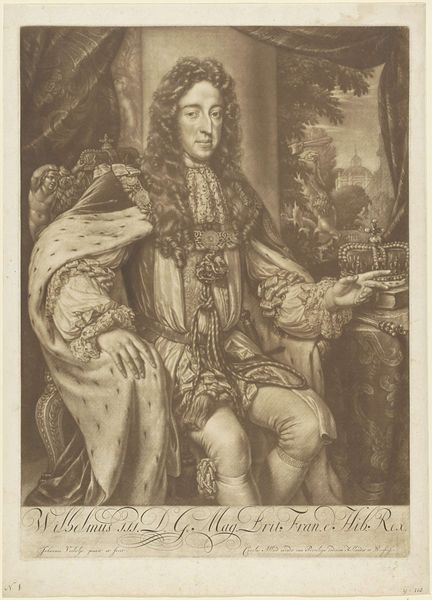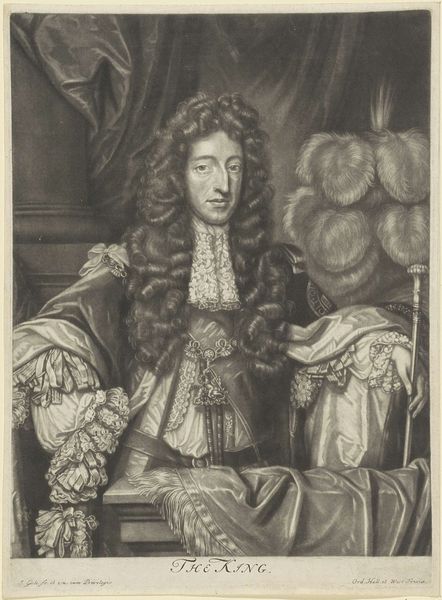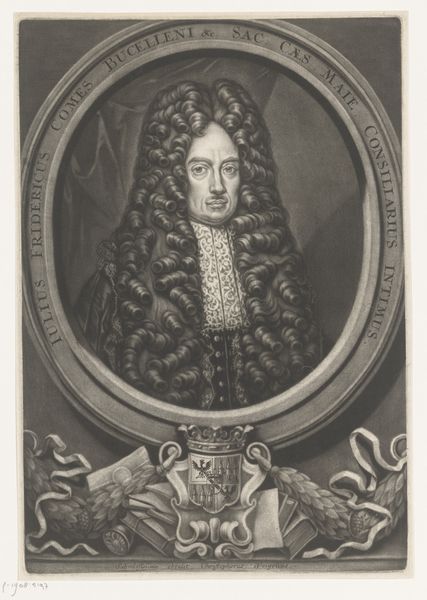
print, engraving
#
portrait
#
baroque
# print
#
figuration
#
history-painting
#
engraving
Dimensions: height 338 mm, width 259 mm
Copyright: Rijks Museum: Open Domain
Jacob de Later made this portrait of William III, Prince of Orange, using the technique of mezzotint. This process involves roughening the entire metal plate with a tool called a rocker, then smoothing areas to create the image. Observe how the material process influences the portrait's appearance, giving it a soft, velvety texture. The details in William's elaborate wig and clothing are rendered through subtle gradations of tone, a hallmark of mezzotint. This labour-intensive method, requiring skilled hands and specialized tools, stands in contrast to the industrial processes of mass production. Consider the social context of this artwork. Mezzotint allowed for the reproduction of images, making portraits like this more accessible to a wider audience. Yet, the labor involved in creating each print speaks to the value placed on craftsmanship and artistic skill. By focusing on the materials, processes, and social context of this portrait, we gain a deeper appreciation for the work involved in its production, challenging traditional distinctions between fine art and craft.
Comments
No comments
Be the first to comment and join the conversation on the ultimate creative platform.
